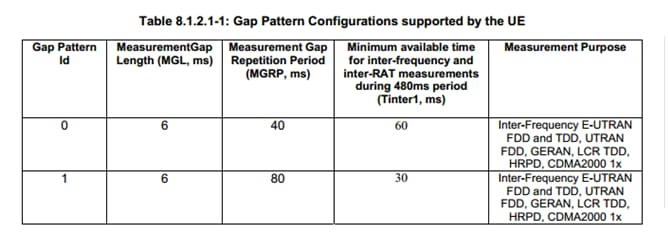Lol, wait. My understanding is, once you start TTT you wait until it expires whatever the measured value you find during the time TTT is running (assuming, you don’t report A1, for example, then you would stop everything).
Once TTT expires, if the condition is met, MR is sent, if not, no MR is sent, continue to measure.
What a confusing topic. 
Let me comeback with 3gpp specs. 
You mean leaving criteria measurement start after sending MR for entering criteria?
This really interesting, as I had some delayed ho even after MR being sent.
I agree with this.
What else would be the purpose of leaving condition?
And what about the measurement gap (for interFreq measurement)?
Because measurement gap is 6 ms.
What about the TTT in this case?

That is why I think it is better to use larger TTT for IFHO to make MR decion hardened, but on anther hand you make your throughput reduced on serving cell
Measurements continue, for example, for B1 or A5, while the eNB doesn’t send the RRC Reconfiguration removing the gaps.
Typically the removal is done via another event, like, A1.
Report on leave only.
But after MR sent is sent for entering condition.
There are 2 opposite views in this group on this, but atleast specs support us in what we says.
ReportOnLeave, but, irrespective of that, the spec says that all measurements during TTT must meet criteria in order to a MR be sent, so, why wait until the end of TTT if you already know you won’t send the MR?
Maybe it is the classical “It is up to implementation” ![]()
Answer is: it does not wait until TTT expires.
Yes, same i have written above:
“So exit before TTT is only when leaving crieteria is met.”
Only leaving criteria is offset-hyst.
Does anyone has other views?
Specs says opposite.
Specs says opposite:
Yes by this, spec says only entry condition.
This also n should be right toavoid all fluctuations.
Else with more hyst, more range of fluctuations to send MR.
So offset - hyst applied post TTT expiry?
Thats is the point i want to put.
So finally you say leave condition (offset-hyst) does not influence ttt runing in anyway?
Think at A3 event, how can you replace a cell with a neighbor that is worse than offset-hyst after TTT expires according to your explanation?
I think everyone needs to read again the role of hyst and how is involved in stopping TTT as explained on ShareTechNote.
This is not a matter of voting who is right or wrong.
It is a matter of understanding specs and UE implementation.
Also think at the case when TTT is started for a neighbour that later degrades by 10 dB during TTT. According to your explanations A3 will still be triggered even if neighbor is worse than offset-hyst by 10 dB which is clear that it will trigger a Radiolink failure on target cell.
Another topic, TTT is started by something, is stopped by something and triggers a measurement report when it expires.
If not offset-hyst stops TTT then what exactly can stop TTT once started?
As per 3GPP snap shared by @sadanandk2, same entry criteria offset+hyst stops TTT.
But as I have doubt, I will read 3GPP again.
This is why hyst was invented. To have it +hyst at entry criteria and -hyst at leave critriia.
Otherwise value would have been included in offset if in both cases needs +hyst.
Yes, it’s true.